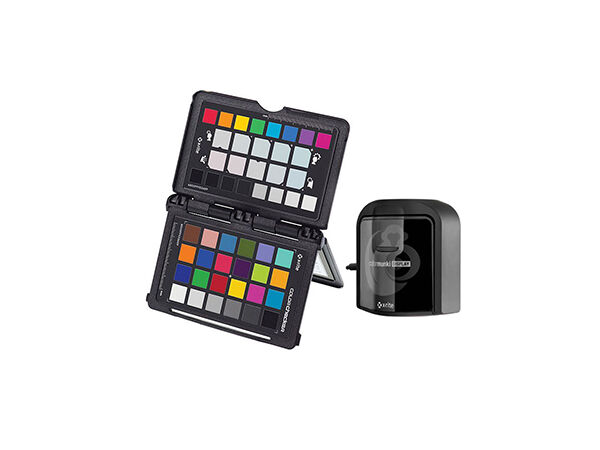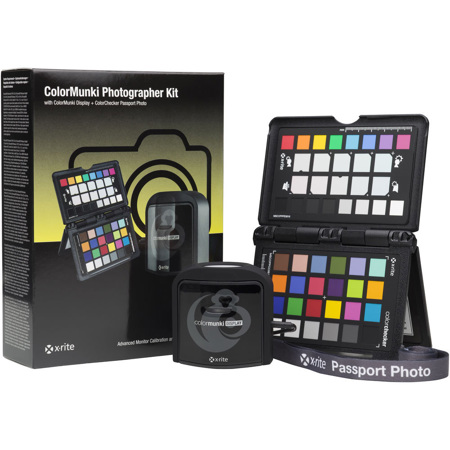

- #BASICCOLOR DISPLAY COLORMUNKI NO INSTRUMENT FOUND PRO#
- #BASICCOLOR DISPLAY COLORMUNKI NO INSTRUMENT FOUND SOFTWARE#
#BASICCOLOR DISPLAY COLORMUNKI NO INSTRUMENT FOUND SOFTWARE#
Resolving this matter will require using profiling software capable of driving both the Discus and i1Display Pro. Whether one can see the difference is debatable.

Verdict: The Discus is measurably more accurate than the i1Display Pro. BasICColor promises updates will be forthcoming. As mentioned in our review of monitor calibration sensors, this is the result of the Discus currently only being calibrated for ambient light measurements of specific viewing booths. tungsten lights and natural daylight) were more accurate with the i1Display than the Discus. You simply cannot see luminance or color shifts at this level.Īmbient light measurements of blackbody sources (e.g.
#BASICCOLOR DISPLAY COLORMUNKI NO INSTRUMENT FOUND PRO#
Typical added error from using an X-Rite i1Display Pro instead of a BasICColor Discus was less than half a Delta-E 2000. These values do, however, need to be taken in context. This relationship held when measuring both white and black levels on standard and wide-gamut CCFL monitors as well as panels using either RGB LED or white LED back lights. Overall, we measured the average Discus to have a 10-20% lower absolute error than the average i1Display. Accuracyīoth sensors were highly accurate, particularly in comparison to older colorimeters or spectrophotometers. Any slight lifting off the screen creates inaccurate measurements. The most reliable measurements require a dark room otherwise very close attention must be paid to how well the puck seals against the screen. The i1Display Pro's small size and narrow profile are a hinderance here. The huge size of the Discus makes these irrelevant. Ambient light, puck alignment - none of this matters. For ease of measurement, the Discus is simplicity itself: place it on the screen, and measure away.

Verdict: If small size and light weight are a priority, the i1Display Pro wins handily. We found that using the i1Display Pro in a darkened room gave the most accurate and repeatable results. If the puck lifts from the screen surface even slightly, ambient light can corrupt the readings. The tall, thin aspect ratio of the device makes placing it on the screen without tipping up an edge a tricky proposition. It is smaller than most older monitor calibration sensors and is positively dwarfed by the Discus. The i1Display Pro is a lightweight by comparison. The Discus weighs as much as a light laptop, so propping up the screen is essential. Measuring a laptop with the Discus is an interesting proposition. Otherwise, the Discus can press hard enough onto the screen to distort colors. The weight is enough, however, that care must be takes not to tip the monitor screen to far backwards. It seals out ambient light better than any other sensor we have used. The comparatively huge size of the Discus is an advantage when performing measurements. If you are choosing one to pack in a bag for on-location shooting, the i1Display is the obvious choice. The i1Display Pro looks positively tiny by comparison. The counterweight - slightly smaller than the sensor itself - is an actual hockey puck. Is the extra cost worth it? Handling:įirst, let's look at the contenders. $1300 for the Discus, $250 for the i1Display Pro (alternatively known as the i1Display 3). The street price differential between the competing sensors is not minor. The mean measurement error of the Discus was consistently lower than that of the X-Rite sensors, but only by a fraction of a Delta-E 2000 (one dE-2000 approximates the minimum visible color difference under ideal conditions). We noted an advantage in measurement accuracy for the Discus over the i1Display Pro/ColorMunki Display. Our evaluations of monitor calibration sensors showed the X-Rite i1Display Pro, ColorMunki Display, and the BasICColor Discus to be the best display measurement options available. X-Rite i1Display Pro: Measurement accuracy


 0 kommentar(er)
0 kommentar(er)
